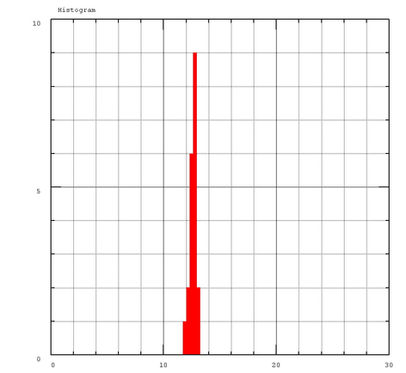top of page
QUIJINGUE
Stony Iron
TYPE:
CLASS:
CLAN:
GROUP:
SUBGROUP:
TYPE PET:
SHOCK STG:
WEATHERING:
COUNTRY:
YEAR:
DESCRIPTION:
ACHONDRITE
-
PALLASITE
PMG
-
W3
BRAZIL - BA
1984
Pallasite with Ni content in the metallic phase around 7.5 wt%, composed mainly of Mg-olivine in the silicate phase. Weathering W3..
PETROGRAPHY:
The rock has a metallic matrix composed of a ferro-nickel alloy similar in color to that of stainless steel, with centimetric olivines (0.7 to 1.5 cm in length), widely internally fragmented, yellowish, euhedral to anhedral, with predominant shapes rounded inlaid in this matrix. The study of a thin section under a microscope with reflected light allows the observation: presence of smaller minerals and even a little of the alloy filling the fractures present in the crystals of the silicatic phase, where these, for the most part, assume the shape of the fractures; curved contacts, sometimes straight, of the olivine with the metallic phase, in which the alloys of kamacite and taenite predominate; olivine crystals dark reaction edges; the presence of texture of ex-plessitic solution between the metal alloys, whose dimension reaches 0.8 mm in length (E-W direction). It is appropriate to add that within the metallic phase, small inclusions of: white mineral (schreibesite) with well-developed polygonal structure were also present, dispersed throughout the matrix, of varying millimeter dimensions and, in general, well spaced, that is, they do not form agglomerates, and have straight, sometimes curved, contact with the metal matrix itself; dark-colored crystals (gray) filling “empty spaces” in the alloy (chromite), which take on various shapes from anhedral to euhedral. It is also verified that these crystals are millimetric occurring in several portions of the matrix, but are located predominantly at the ends of the metallic body, and even in fractures of the silica phase (which is different from the behavior of the white polygonal mineral). Among the phases previously discussed, there is the presence of a differentiated mineral (troilite), which is darker in color than metal and silicate, generally present between the phases or even between the olivine crystals, in general with straight contact, sometimes more rounded. It should be added that, mineralogically speaking, the general composition of the meteorite is: olivine, kamacite, taenite, troilite, schreibersite and chromite. Source: Pereira et al. 2017 (27th Northeastern Geology Symposium).
GEOCHEMISTRY:
Olivine, ~ 70 vol%; Ni content in FeNi metal alloy, 7.5 wt.%.
CLASSIFICATION:
Pallasite with Ni content in the metallic phase around 7.5 wt%, composed mainly of Mg-olivine in the silicate phase. Degree of weathering W3.
CLASSIFIERS:
Wasson J. T. and Zucolotto M. E.
HISTORY:
A single mass weighing 59 kg was brought to the Institute for Technological Research - IPT - in December 1998. It was said that it was discovered about 35 to 40 years earlier by Mr. Atanásio Cosmo Soares (already deceased) while making holes to put a fence around your property, near the city of Quijingue, in Bahia State (10º45 'S, 39º13' W). The stone was weathered and covered by holes that bounded old places occupied by olivines. A small part of the surface had been hammered by the continuous use of stone as an anvil to shape farm tools. The stone was cut in three pieces at the IPT. The largest and the smallest were returned to the owner. The third piece was cut again and some of these pieces were sliced and used to make polished thin sections for optical and electron microscopy. The Quijingue meteorite is considered the first Brazilian pallasite. Source: meteoritosbrasil.weebly.com
All information that does not have a specific source was extracted from the Meteoritical Bulletin Database.
All images are copyrighted.
bottom of page





